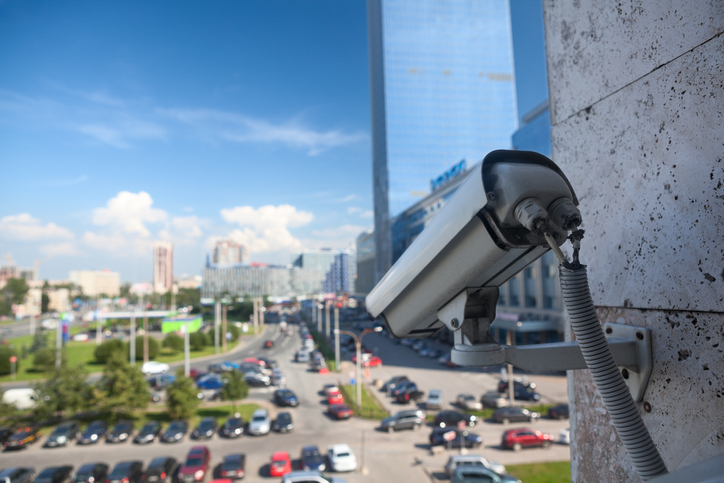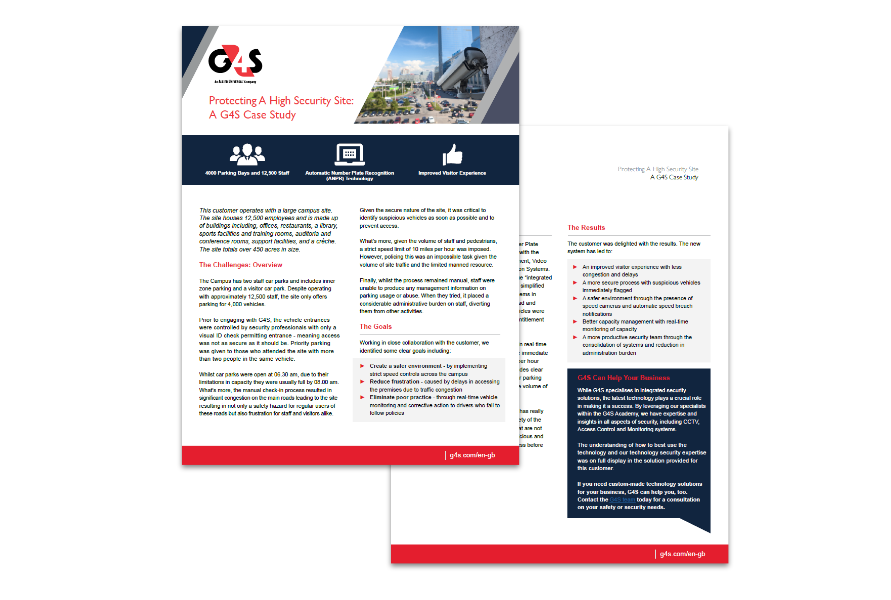Protecting a High Security Site

THE CHALLENGES: OVERVIEW
The Campus has two staff car parks and includes inner zone parking and a visitor car park. Despite operating with approximately 12,500 staff, the site only offers parking for 4,000 vehicles.
Prior to engaging with G4S, the vehicle entrances were controlled by security professionals with only a visual ID check permitting entrance - meaning access was not as secure as it should be. Priority parking was given to those who attended the site with more than two people in the same vehicle.
Whilst car parks were open at 06.30 am, due to their limitations in capacity they were usually full by 08.00 am. What’s more, the manual check-in process resulted in significant congestion on the main roads leading to the site resulting in not only a safety hazard for regular users of these roads but also frustration for staff and visitors alike.
Given the secure nature of the site, it was critical to identify suspicious vehicles as soon as possible and to prevent access.
What’s more, given the volume of staff and pedestrians, a strict speed limit of 10 miles per hour was imposed. However, policing this was an impossible task given the volume of site traffic and the limited manned resource. Finally, whilst the process remained manual, staff were unable to produce any management information on parking usage or abuse. When they tried, it placed a considerable administrative burden on staff, diverting them from other activities.
THE GOALS
Working in close collaboration with the customer, we identified some clear goals including:
- Create a safer environment - by implementing strict speed controls across the campus.
- Reduce frustration - caused by delays in accessing the premises due to traffic congestion.
- Eliminate poor practice - through real-time vehicle monitoring and corrective action to drivers who fail to follow policies.
THE SOLUTION
G4S supplied an ANPR or Automatic Number Plate Recognition solution. The ANPR integrated with the customers Access Control, Visitor Management, Video Surveillance and Perimeter Intruder Detection Systems. This meant the customer benefitted from true “integrated security”. The job of the security officer was simplified dramatically by reducing the number of systems in operation and thereby freed up their workload and allowed them to focus on priority tasks, Vehicles were only provided access if the overall access entitlement was still valid.
The ANPR cameras monitor vehicle speed in real-time and flag exceptions so that officers can take immediate corrective action and ensure the 10 miles per hour speed limit is adhered to. The system includes clear signage which guides the vehicle to their car parking location and provides visual indication of the volume of spaces available.
This, along with the reduction in congestion, has really helped the visitor experience and overall safety of the surrounding road network. Number plates that are not recognised are immediately flagged as suspicious and are required to go through an approval process before being granted access.
THE RESULTS
The customer was delighted with the results. The new system has led to:
- An improved visitor experience with less congestion and delays.
- A more secure process with suspicious vehicles immediately flagged.
- A safer environment through the presence of speed cameras and automatic speed breach notifications.
- Better capacity management with real-time monitoring of capacity.
- A more productive security team through the consolidation of systems and reduction in administration burden.
DOWNLOAD THE PDF CASE STUDY
If you would like this case study in PDF, please complete the form to gain access.

